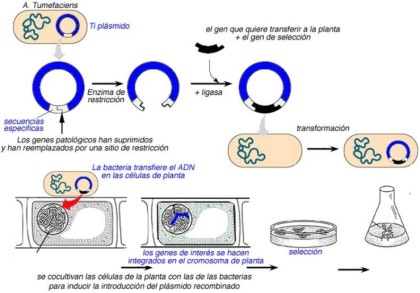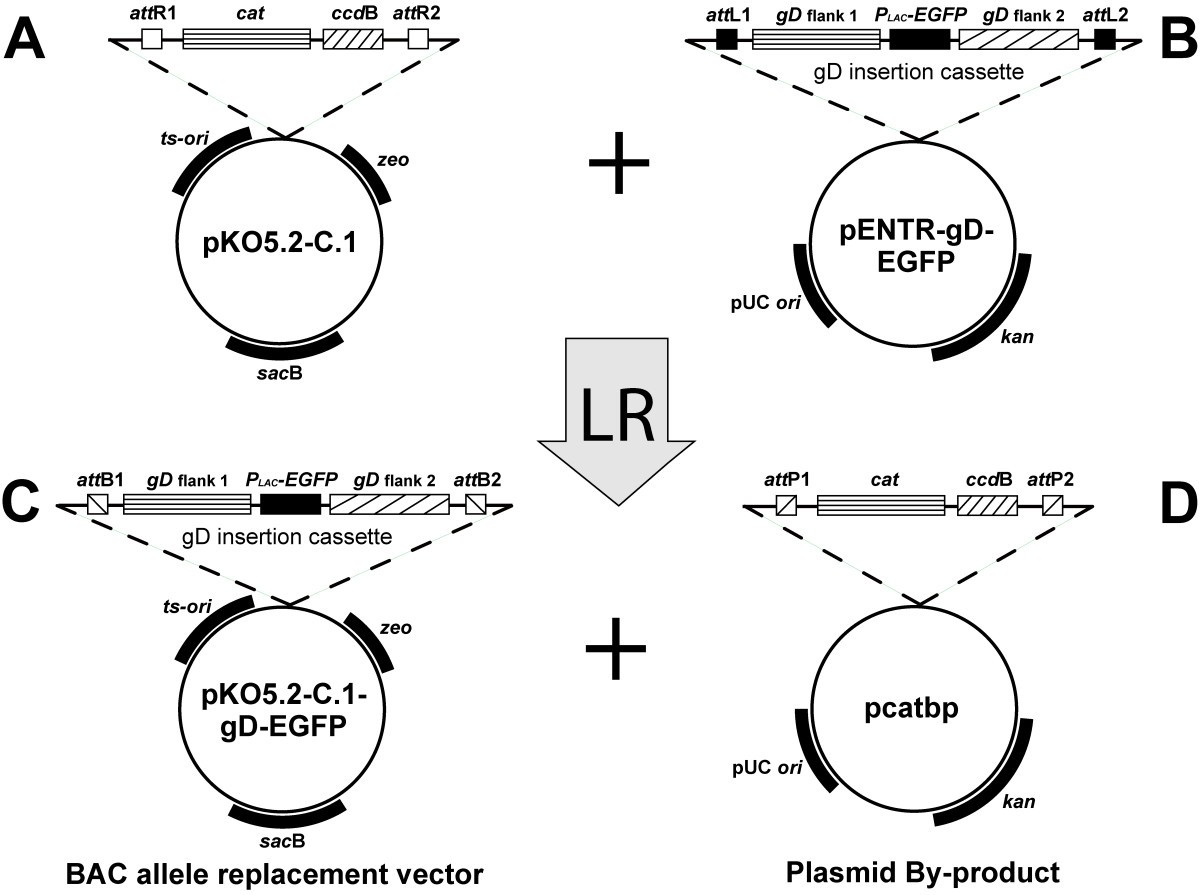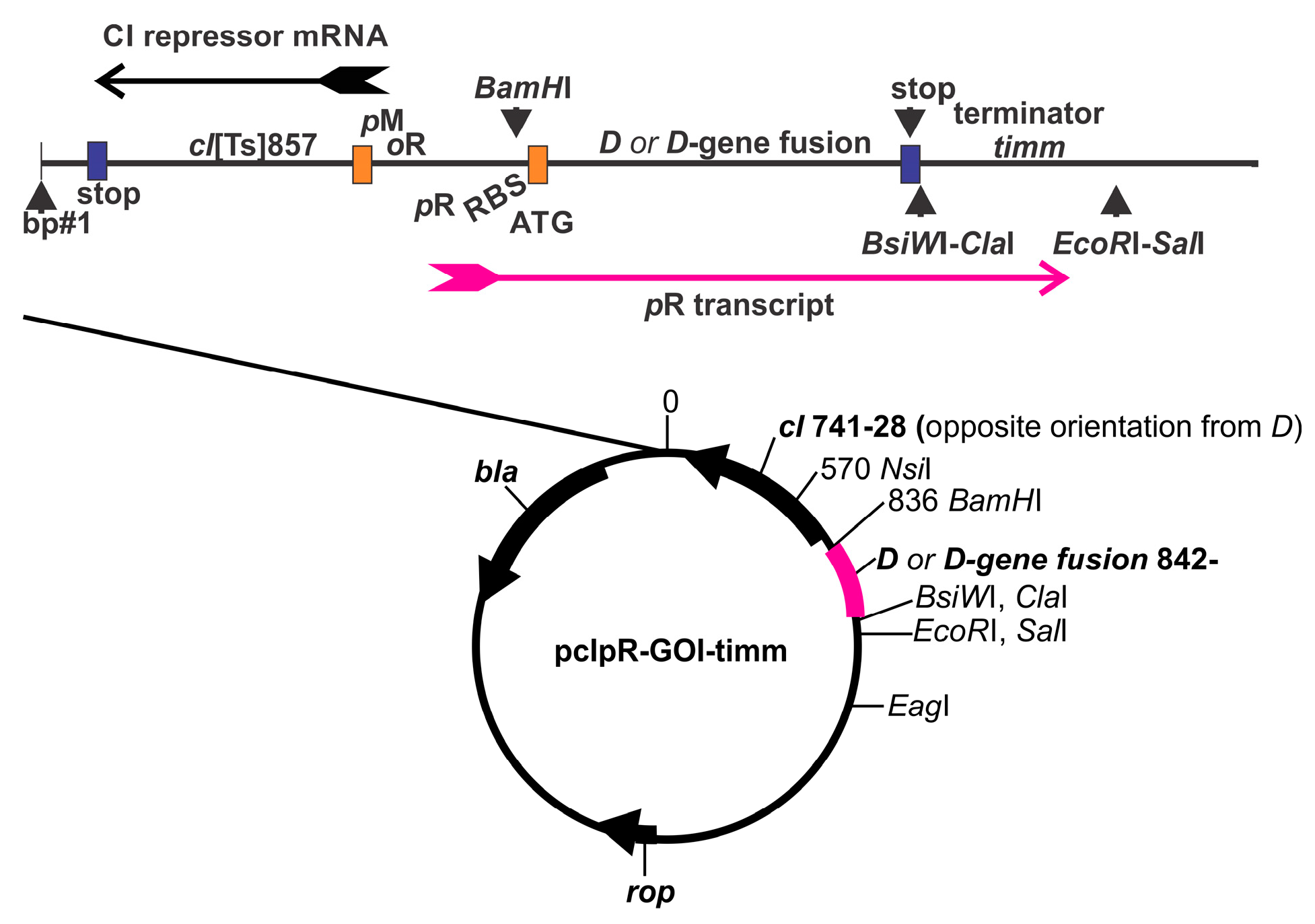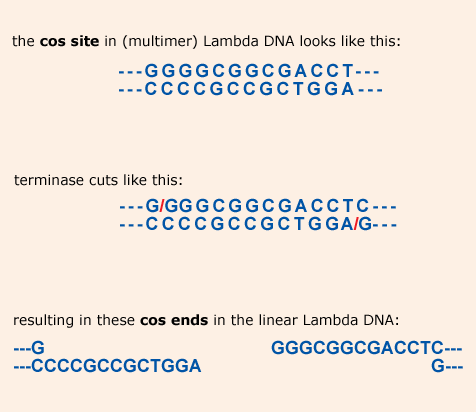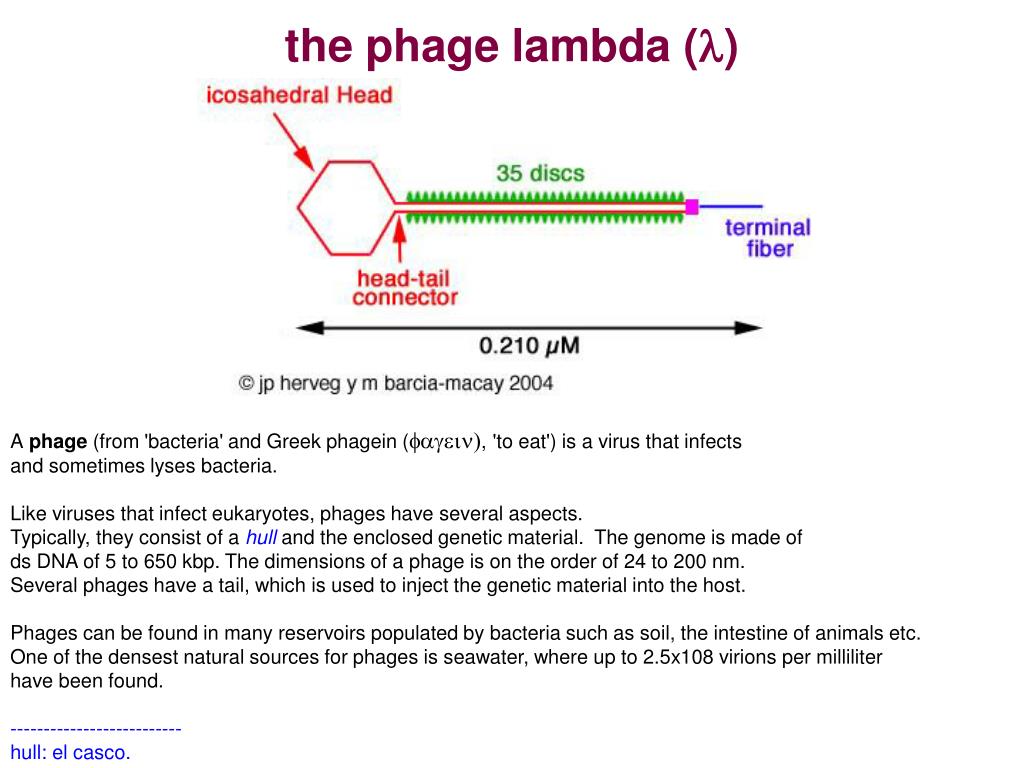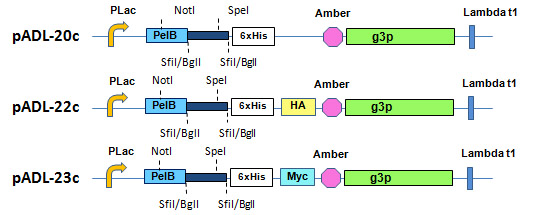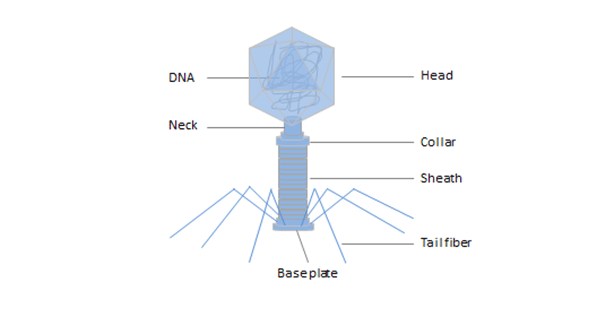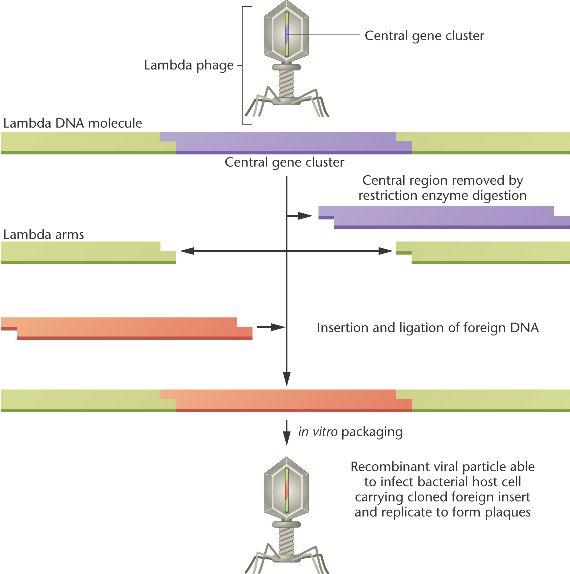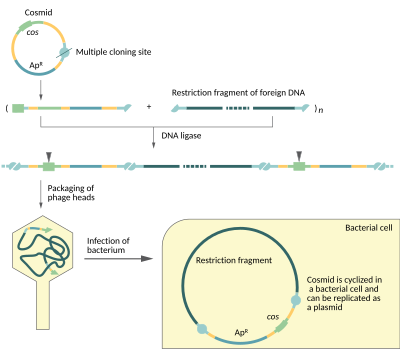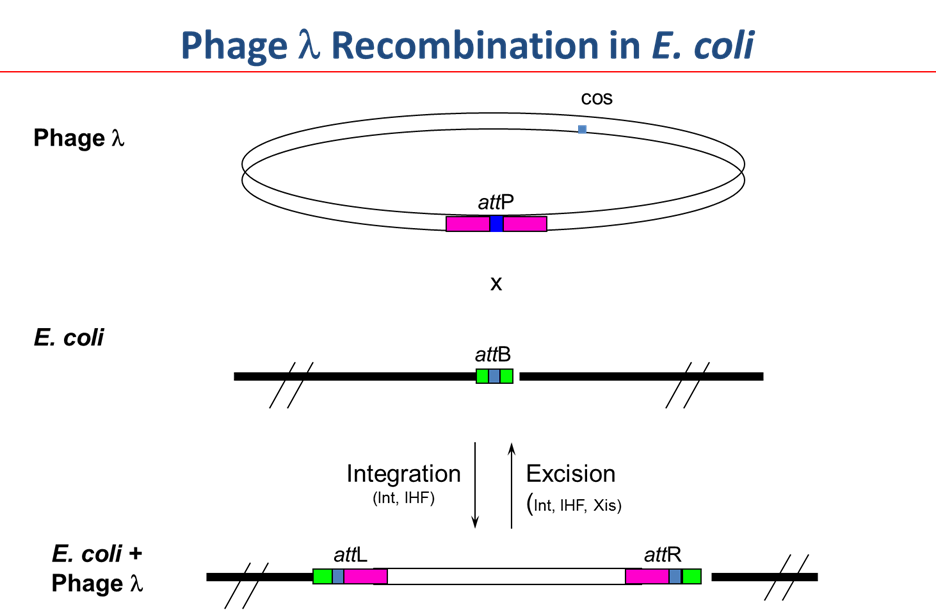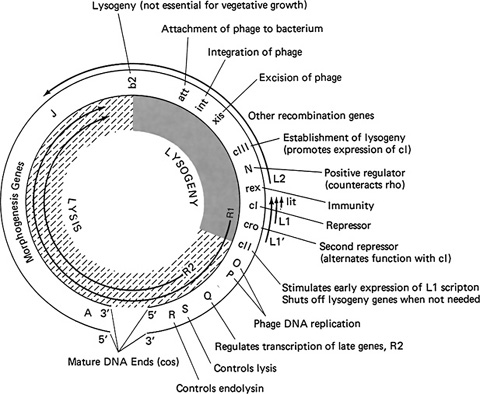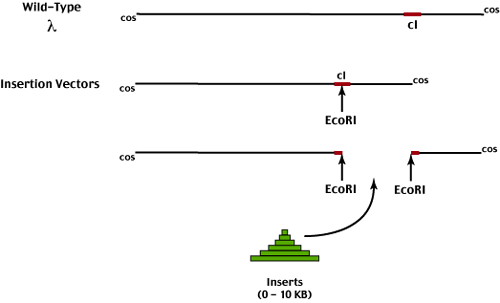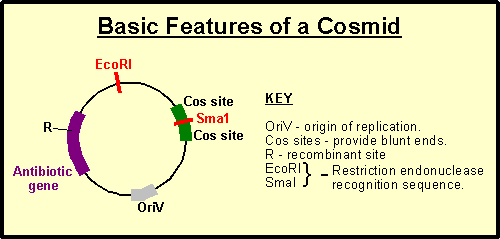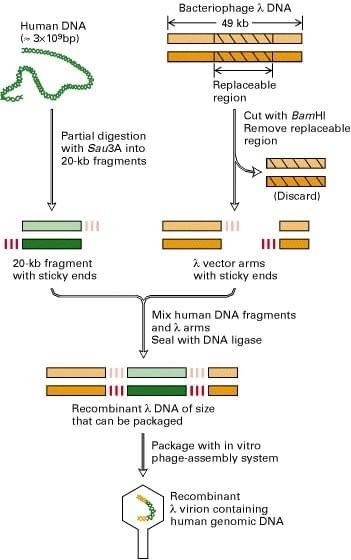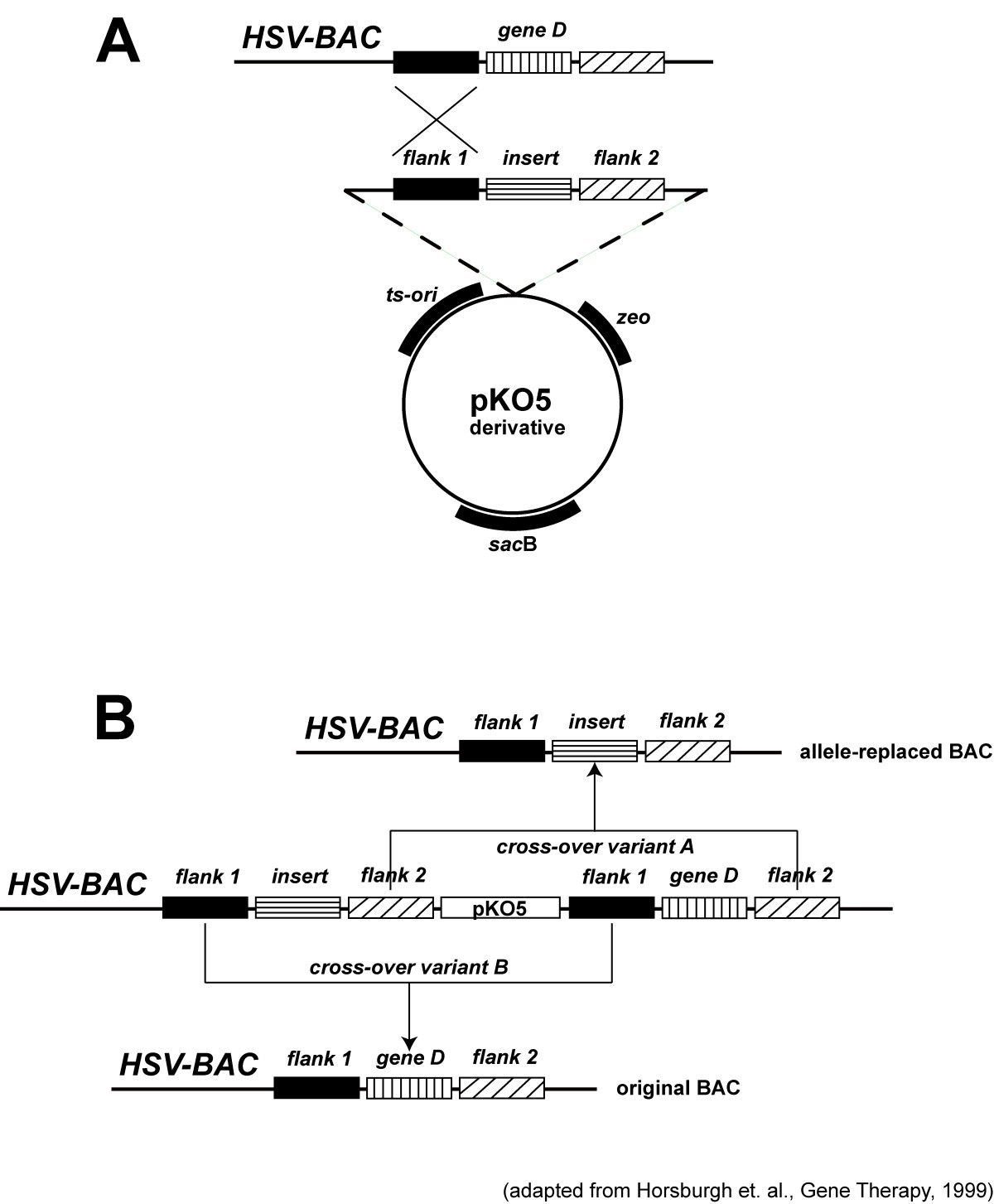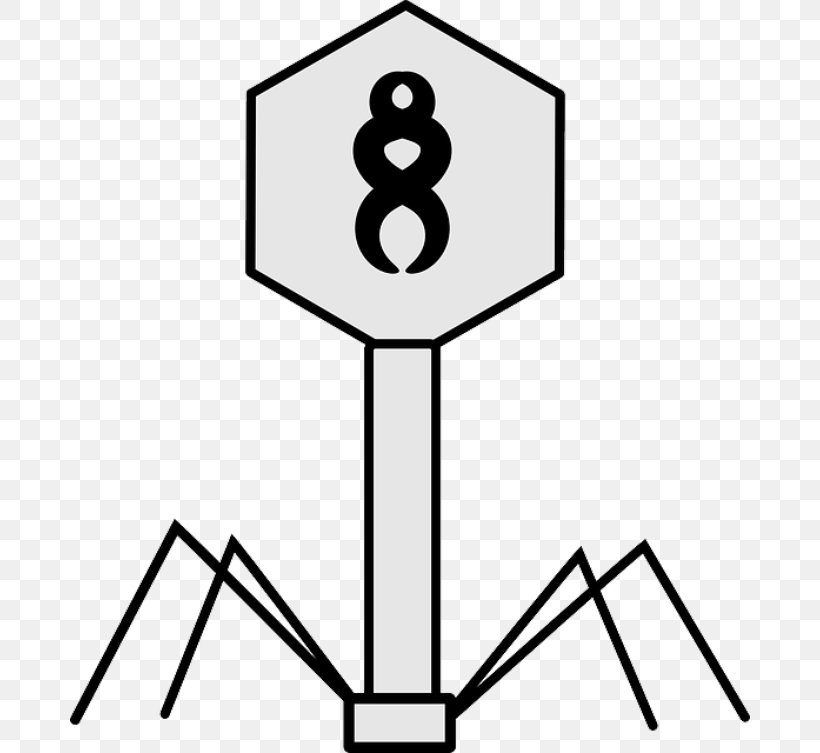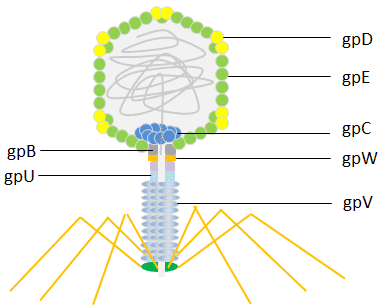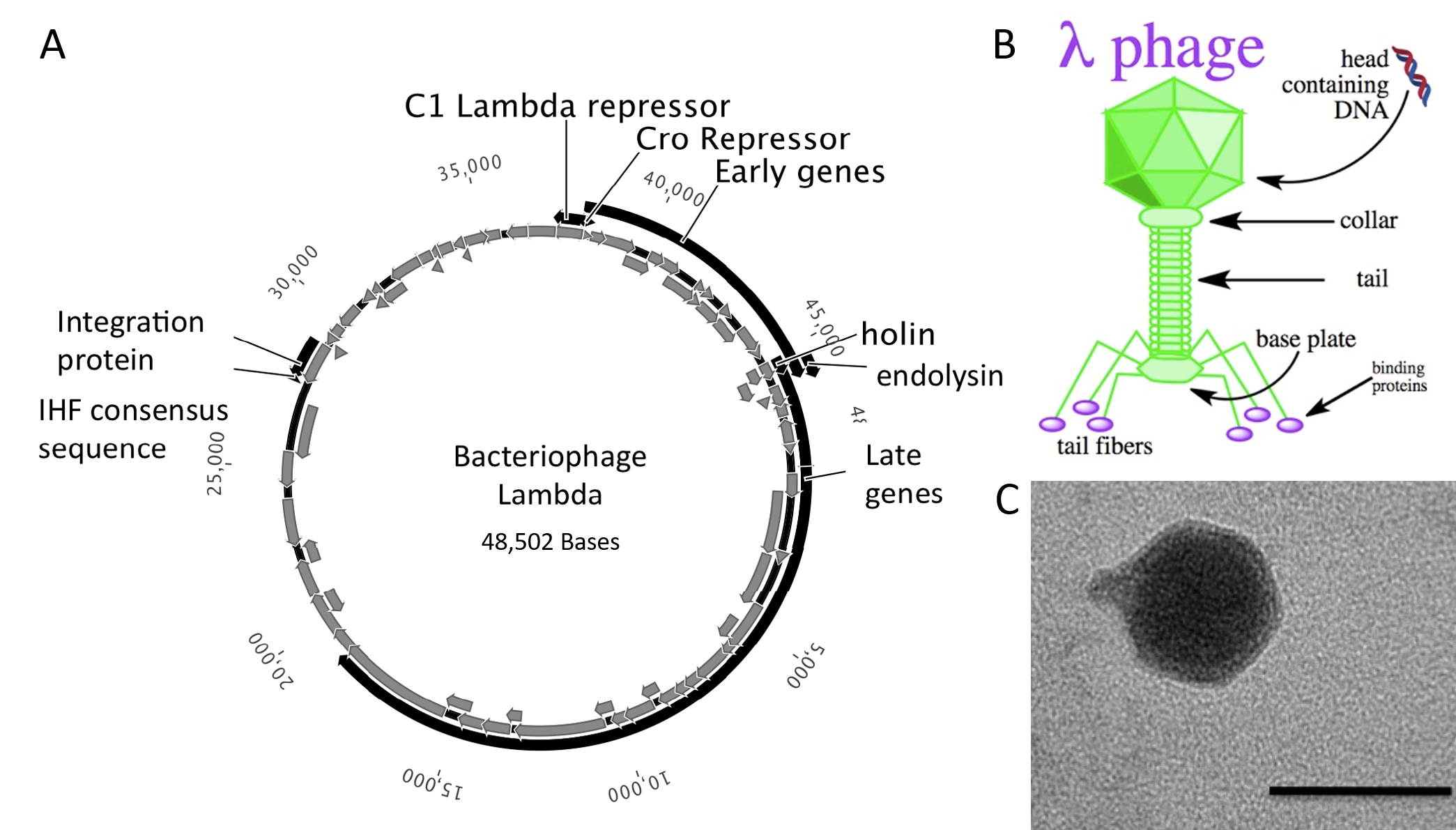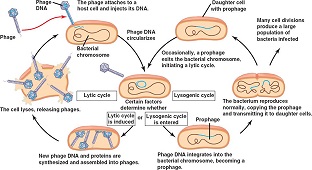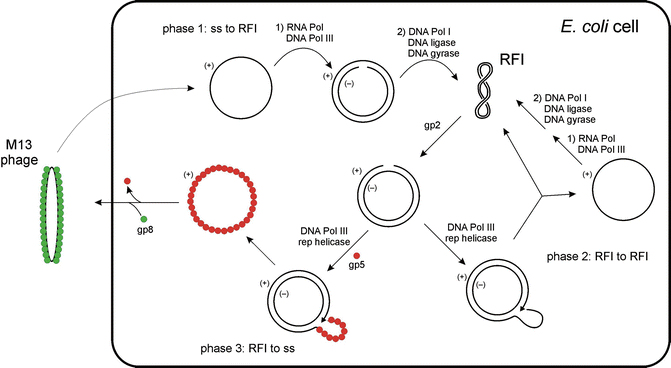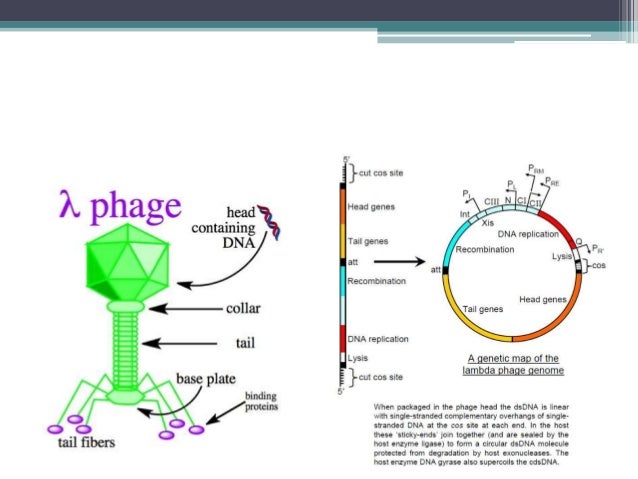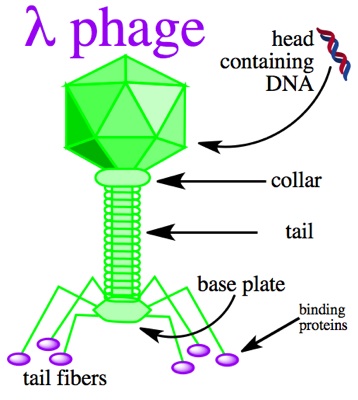Lambda Phage As Vector
Genetic organization of lambda dna the lambda phage is a typical example of bacteriophage which has a polyhedral head and tail.

Lambda phage as vector. Enterobacteria phage l lambda phage coliphage l is a bacterial virus or bacteriophage that infects the bacterial species escherichia coli. Of this vector is the size of dna that can be introduced into the cell by transformation. Using lambda scientists developed key techniques such as how to sequence dna and discovered the enzymes essential for making rna in vitro. This presents problems when you are trying to create a genomic library of a large genome such as with.
Coli host this type of experiment requires that the vector be in its circular form with the cos sites hydrogen bonded to each other. Foreign dna fragments are inserted into a unique restriction site in the vector genome. The vector itself can be grown therefore must contain at least 75 of the wild type genome length. The virus is easy to propagate and therefore has long been a model organism.
An understanding of the intrinsic molecular organization and of the genetic events which determine lysis or lysogeny in lambda has allowed investigators to modify it to suit the specific requirements of gene manipulations. Bacteriophage lambda a bacterial virus that infects e. The dna is protected by the polyhedral structure and the tail interacts with the specific site of bacteria for attachment. Lambda insertion vectors insertion vectors are the simplest form of lambda cloning vectors.
Therefore lambda phages are mostly used as a cloning vector. Lambda phage can be manipulated and used as an anti cancer vaccine nanoparticle targeting human aspartyl asparaginyl b hydroxylase asph haah. A cloning vector is a small piece of dna that can be stably maintained in an organism and into which a foreign dna fragment can be inserted for cloning purposes. Extensive research has been directed toward the development of multipurpose lambda vectors for cloning ever since the potential of using coliphage lambda as a cloning vector was recognized in the late 1970s.
Cloning experiments with lambda insertion or replacement vectors a cloning experiment with a lambda vector can proceed along the same lines as with a plasmid vector the lambda molecules are restricted new dna is added the mixture is ligated and the resulting molecules used to transfect a competent e. The vector therefore contains features that allow for the convenient insertion or removal of a dna fragment to. Lambda phage will enter bacteria more easily than plasmids making it a useful vector that can destroy or can become part of the hosts dna. Lambda phage consists of a virus particle including a head also known as a capsid tail and tail fibers.
This virus is temperate and may reside within the genome of its host through lysogeny.








